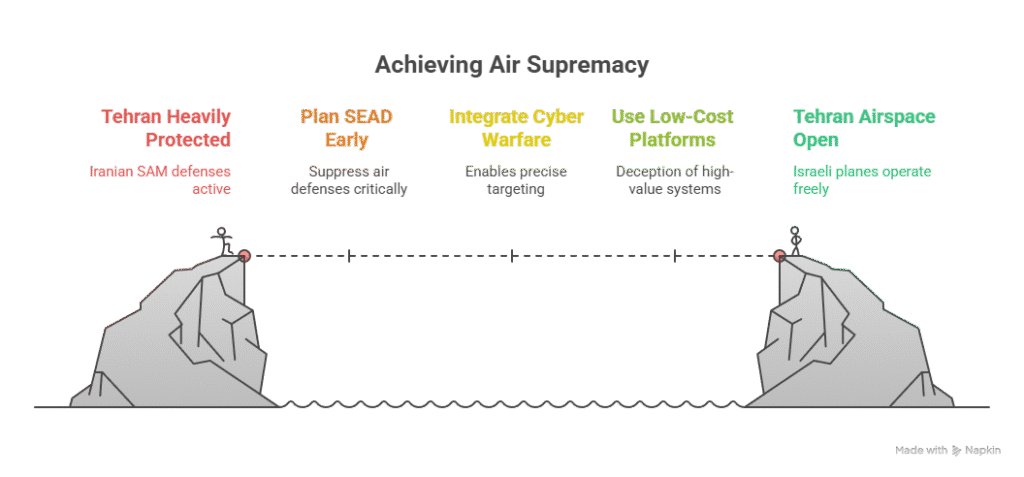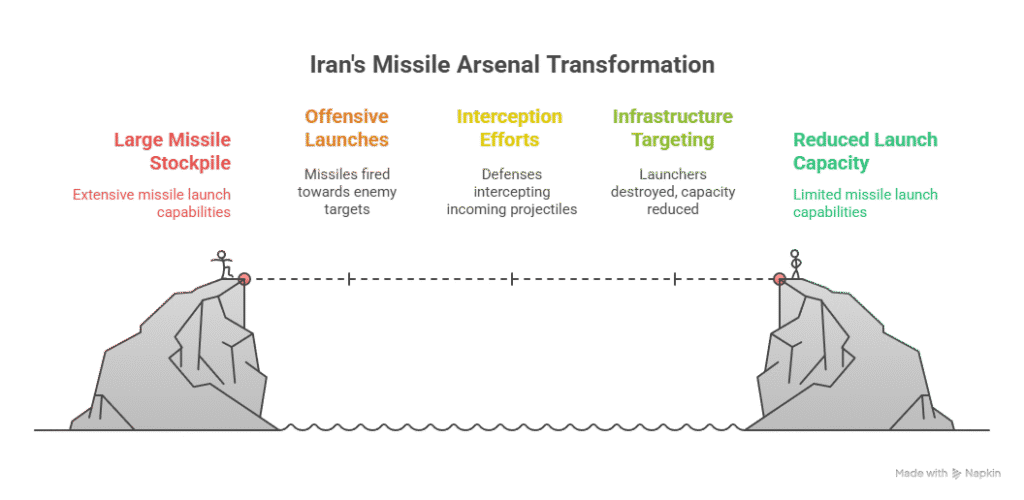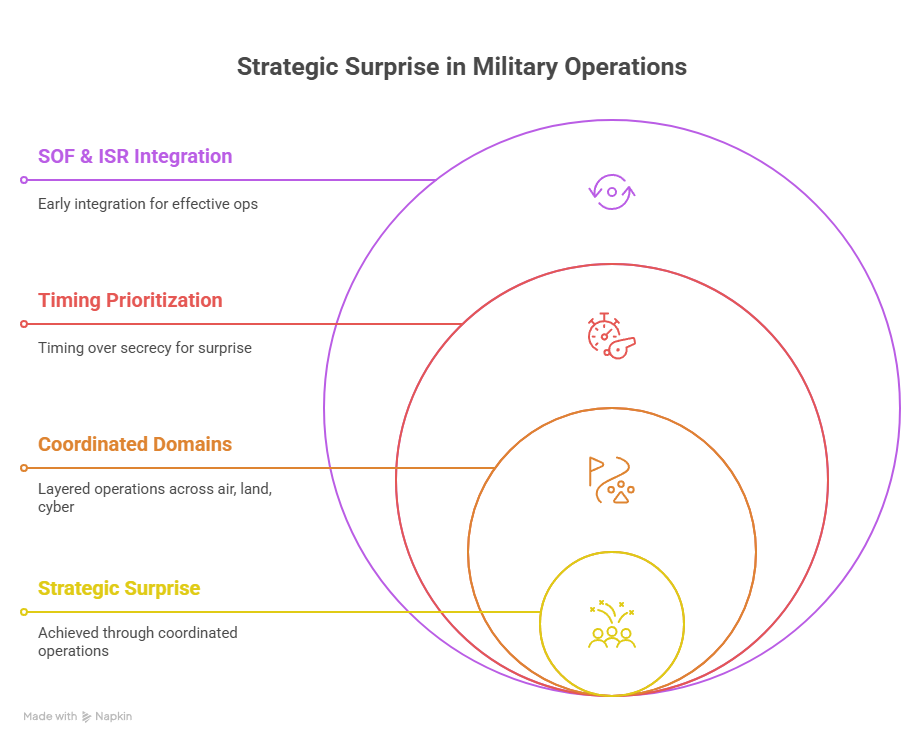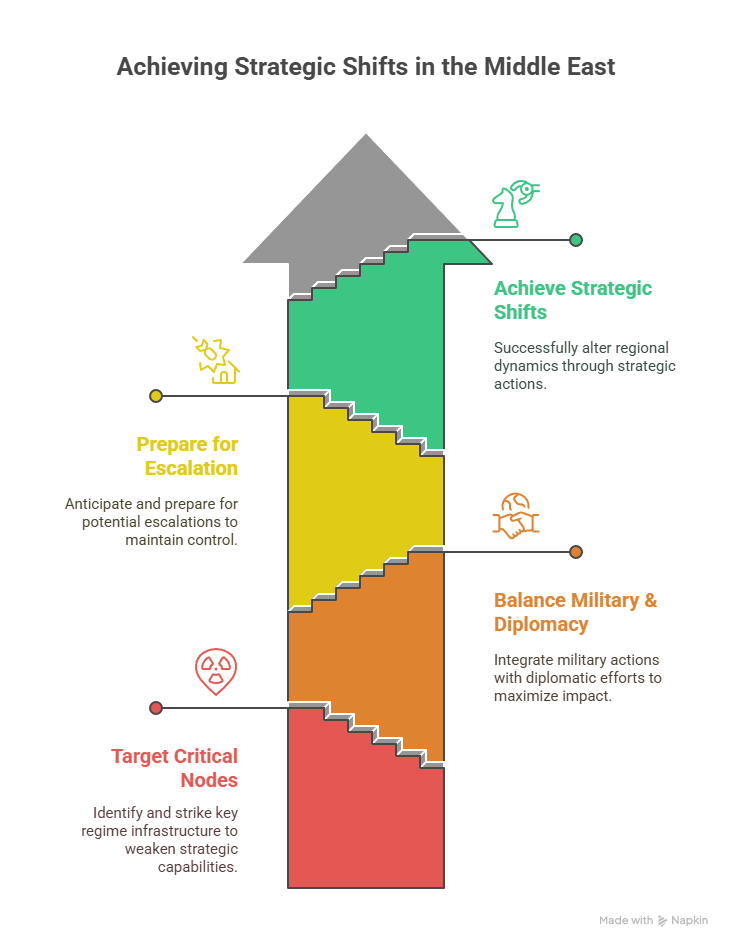Explore how Israel’s strategic air strikes reshaped Iran’s military capabilities, with expert analysis, real-world case studies, and actionable insights for defense planners and policymakers.
Introduction
The Israel Iran war has entered a new phase. Israel’s precise air campaign has shifted regional dynamics [1]. However, this strategy brings both strategic gains and inherent risks.

1. Air Supremacy & Defense Degradation
Israel launched a campaign dubbed Operation Rising Lion, utilizing F‑35s, F‑16s, and F‑15s to dismantle over 120 radar and missile systems, achieving air dominance above key Iranian areas, including Tehran.
Case study – Israeli Air Force (IAF):
Before: Iranian surface-to-air missile (SAM) defenses heavily protected Tehran.
Approach: The IAF employed Suppression of Enemy Air Defenses (SEAD) tactics using stealth jets, drones, and cyber support.
Outcome: Over 70 Iranian air defense batteries eliminated; Israeli planes now operate with impunity.
Practical insights:
Plan SEAD early. Suppressing air defenses is critical.
Integrate intelligence and cyber warfare. This enables precise targeting.
Use low-cost platforms (drones/jammers) for high-value system deception.

2. Missile Stockpile Depletion & Cost Trade‑Offs
Iran fired around 400 ballistic missiles, but rapidly depleted its supply following initial Israeli strikes that destroyed one-third of Iranian launchers.
Case study – Iran’s ballistic arsenal:
Before: Estimated 2,000–3,000 missiles capable of hitting Israel.
Approach: Offensive missile launches met by Israeli Arrow and Iron Dome systems, supported by U.S. THAAD.
Outcome: Israel intercepted over 90 % of incoming missiles; Iran’s launching capacity is now severely reduced.
Practical insights:
Deploy layered missile defenses. Combining Arrow, Iron Dome, and THAAD enhances protection.
Calculate financial impacts. Israel spends ~$285 million per night on interceptors.
Target enemy launch infrastructure early to disrupt offense momentum.

3. Strategic Surprise Through SOF & Intelligence
Israel’s strike combined special operations forces (SOF) and deep intelligence to overwhelm Iranian defenses despite some expectations of Israeli action.
Case study – Covert ops integration:
Before: Iran anticipated possible strikes but lacked specificity.
Approach: Israel fused long-term surveillance, SOF infiltration, and synchronized air and cyber strikes.
Outcome: Achieved strategic surprise; Iran was unable to mount coordinated aerial defense.
Practical insights:
Integrate SOF with ISR (intelligence, surveillance, reconnaissance) early.
Prioritize timing over covert secrecy for true surprise.
Coordinate domains: air, land, cyber for layered operations.

4. Regime Pressure & Geopolitical Risks
Israel’s offensive degraded Iran’s nuclear capacity, missile inventory, and leadership—pressuring major shifts in diplomatic posture.
Case study – Regime recalibration:
Before: Iran maintained “no war, no peace” strategy, leveraging proxy groups.
Approach: Israeli strikes targeted nuclear facilities, missile launchers, and senior military figures.
Outcome: Iranian strategy weakened and regional influence reduced; U.S.-Iran talks halted.
Practical insights:
Target regime-critical nodes (e.g., nuclear or command infrastructure).
Balance military objectives with diplomacy. Regime pressure may open negotiation windows.
Prepare for escalation. Degrading Iran could push it to leverage proxies or pursue nuclear options.
Conclusion
Israel’s strategic air campaign against Iran marks a significant shift in Middle East military dynamics. Air dominance, missile defense, and SOF‑integrated precision strikes have yielded short‑term gains. However, costs—financial and geopolitical—are rising. The outcome hinges on sustained deterrence, diplomatic engagement, and readiness for potential escalation.
References
“Israeli strikes on Iran cap dramatic shift…”, Washington Post, June 21, 2025.
“Air Supremacy Over Tehran Gives Israel a Decisive Edge…”, Time, June 17, 2025.
“Wiping out surface‑to‑air missiles is the way to win…”, Business Insider, June 2025.
“Israel‑Iran conflict may last only as long as their missiles hold out”, Washington Post, June 17, 2025.
“Israel’s attack has exposed Iran’s lack of firepower…”, The Guardian, June 19, 2025.
“By fusing intelligence and special operations…”, Atlantic Council, June 2025.
“June 2025 Israeli strikes on Iran”, Wikipedia (summary), June 2025.
“The implosion of Iran’s ‘no war, no peace’ strategy”, Financial Times, June 20, 2025.
Tags: Israel‑Iran war, air dominance, SEAD strategy, missile defense, strategic surprise
